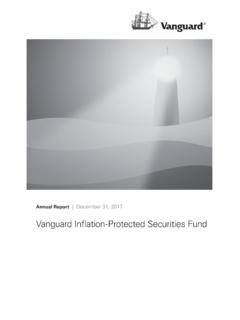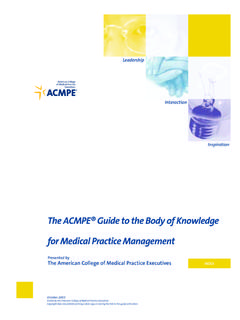Transcription of When Disagreements Gets Ugly: Conflict In The …
1 governance Matters Board Leadership Tool Page 1 when Disagreements gets ugly : Conflict In The BoardroomThere s really nothing more miserable for a group of volunteers than to find themselves in a situation where one or more people disagree passionately, and in a very personal manner. Suddenly all the stated or assumed values of the organization respect for the dignity of each individual, professionalism, and inclusion all go flying out the window. The cure for these situations is often almost as uncomfortable as the ailment, suggesting that prevention is the key to the well-being of the body positive aspect of Conflict is that it often shows the extent to which some board members care about the organization and are willing to speak out.
2 In many cases, volunteers have to overcome a natural reticence to stand up for what they think is right. This reluctance comes from a combination of unwillingness to get involved in a messy or difficult situation, as well as from a concern about how they will be seen if they disagree. In some cases, the absence of Conflict may indicate a certain level of apathy exists on the Personal accusations are made in the boardroom, or people are arguing and no one is listening to one another. People leave the board meeting and cluster in the parking lot to rehash their position or to express what they really think.
3 Board members are quoted in the media as disagreeing with policies or decisions made by the board as a whole, or by specific members or the executive director. People are resigning from the board in anger, or stop showing up at the meetings. Board members are pressured to choose sides in an argument. Members send inflammatory emails attacking their opponents and defending their Effective Nonprofits307 Seventh Avenue, Suite 1603 New York, NY 10001tel fax Matters Board Leadership Tool Page 2 Root Causes: How Conflict Emerges On The BoardConflict in the boardroom often has the following root causes:1.
4 Board members disagree about an issue they care about deeply. The most common issues that provoke Conflict include:a. Differences of opinion about mission and key agency activities. For example, should a group serving battered women also work with the men involved? The answer depends on people s values, not on objective criteria. In these cases, the discussions often evoke strong and passionate opinions about the decision, the organization s standing in the community, and its overall effectiveness in achieving its Differences of opinion about the competence of the executive director.
5 when boards do not have a regular process for evaluating the executive direc-tor s performance, it all comes down to personality, loyalty, or blaming the di-rector for things that are outside of his or her control. As soon as the discussion gets personal, people are likely to square Generational or organizational transitions. Communities evolve over time, but sometimes the board do not make adjustments to reflect those changes. In these cases, founding board members and the new (and often younger) members often have different points of view about policy and program priorities, as well as ways of doing business.
6 These generational differences in experience, per-spectives and understandings can be frustrating to both old and new members, and can often fuel Bad things happen to good organizations. A main funder pulls out unexpect-edly. A large check is forged. A client is seriously injured while at the agency. A disgruntled employee bring a public law suit. These are just a few of the board s biggest headaches. They have to make quick decisions, particularly in crisis situations that also involve the media. In these cases, members emotions particularly fear and anxiety can often get in the way of clear thinking and reasoned The board lacks the tools needed to manage disagreement .
7 Difficult issues do not always generate Conflict . Dissent turns into Conflict when there are no mechanisms for working through differences or crises. This may be due to:a. A lack of understanding about how to manage Conflict . b. A board chair who does not know how to lead the board through the Boards that prefer to avoid Disagreements . Many board leaders and executive directors like to determine decision outcomes before they come to a board meet-ing. As a result, meetings are brief, assent is the norm, and challenging decisions governance Matters Board Leadership Tool Page 3or recommendations is considered inappropriate or a waste of time.
8 In this kind of a board culture, only the most serious issues ever come to the table for full discussion; and when they lead to disagreement , conflicts often erupt because a) board leaders lack the skill to guide the discussion, and/or b) members lack the experience of working through problems as a group . 1. Even with mechanisms in place for managing differences, passionate people with genuine Disagreements may not be able to reach a decision that every-one can live with and support. when consensus is not possible, boards can easily (and quickly) become fractionalized, with some members becoming bitter and leaving the People behave in provocative, unproductive also arises when one or more people engage in behaviors that others expe-rience as confrontational, inappropriate or otherwise disagreeable.
9 Sometimes behaviors are perceived as provocative by some but not by others. Is Bob being a jerk, or is he just raising a difficult issue? Did Lois take it personally when Angela voiced her negative opinions of the special event? On a board of people with diverse personalities, experiences and backgrounds, be-ing direct may be seen as intolerably rude. a. There are times when someone s actions are clearly inappropriate. when the stakes are high and the issues are important, people can behave in completely inappropriate and uncharacteristic ways. Examples of these behaviors include:1.
10 Frequently interrupting or talking over other board Dominating Publicly disagreeing with board Challenging every statement made by certain individuals on the Bringing up an issue over and over once a decision has been Using overly personal or abusive Using dismissive body language ( eye-rolling).4. Structures promote factions. Membership organizations or boards with a fixed number of slots for certain con-stituencies can be particularly susceptible to conflicts that come from misplaced loyalties. Conflict emerges when these board members feel that their job is to actively guard the interests of the group they represent, rather than to present the unique perspective of their constituency.






